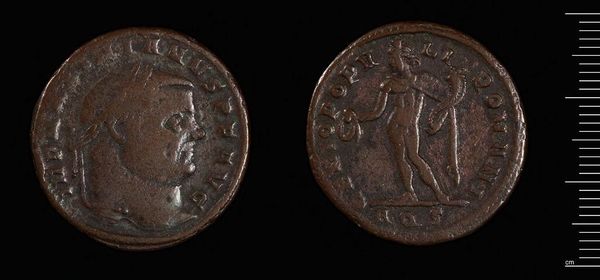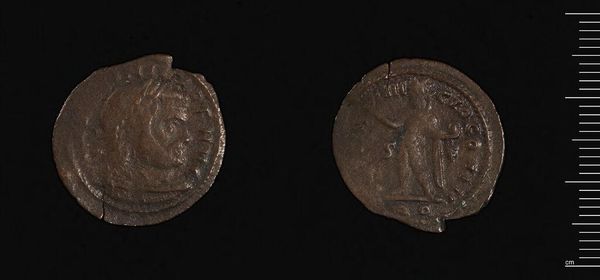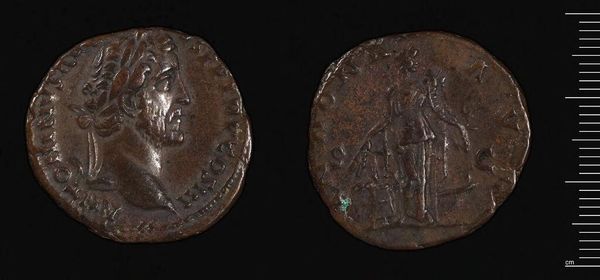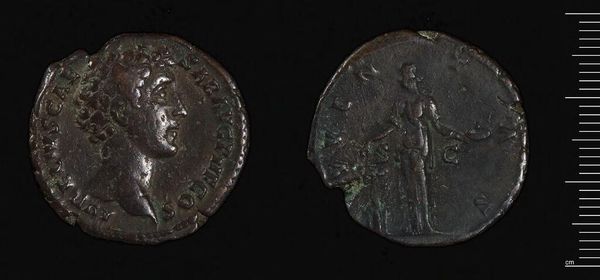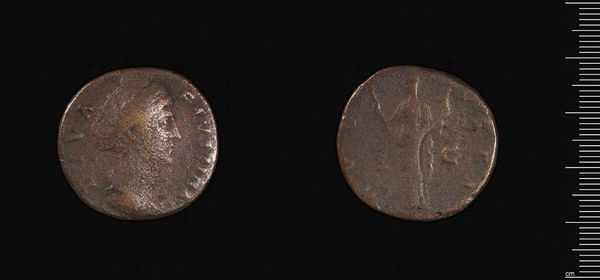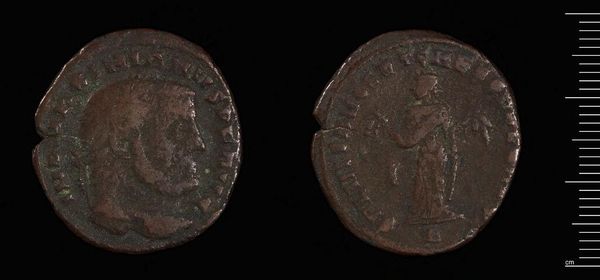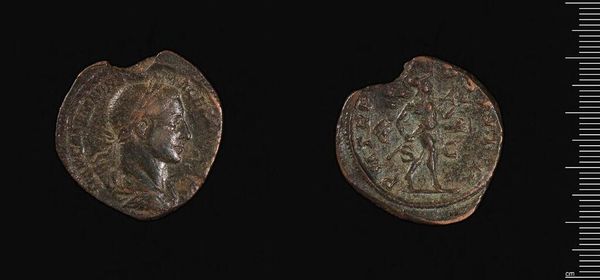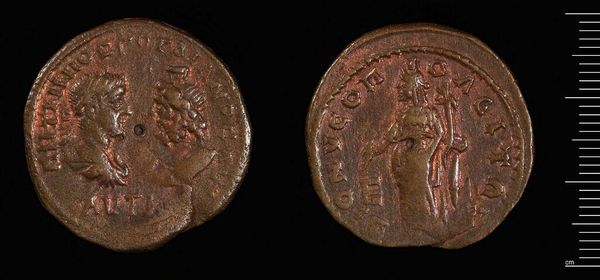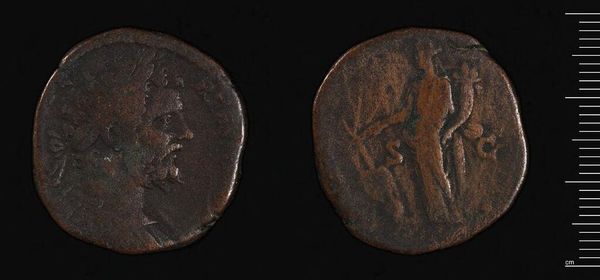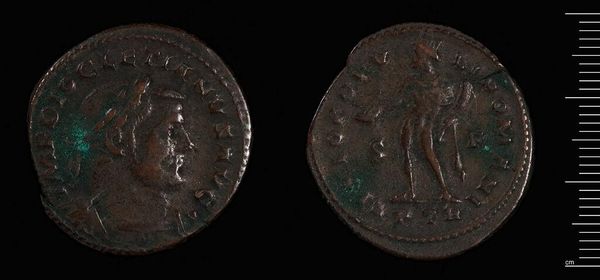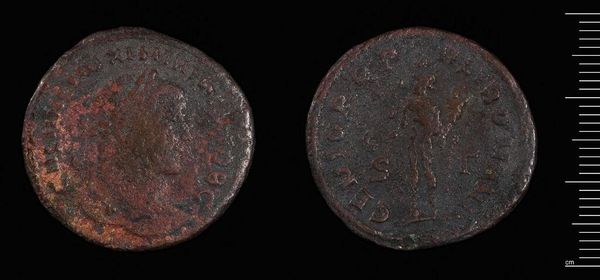
Dimensions: 7.18 g
Copyright: CC0 1.0
Curator: This is a Follis of Diocletian, minted in Antioch. Look closely at its worn surface. What do you notice? Editor: The coin's rough texture and its dark brown hue create a somber feel, giving it the appearance of something unearthed from a long-forgotten place. The piercing at the top is intriguing, too. Curator: Indeed. These coins weren't just currency; they also functioned as propaganda. The portrait of Diocletian on one side and the image of a Roman deity on the other were meant to project power and stability. Editor: I see the figure on the reverse. It looks like Jupiter, holding a scepter. That imagery would certainly resonate with ideas of divine authority. Curator: Precisely! Diocletian sought to stabilize the empire, and this coin, though small, embodies his efforts to legitimize his rule. Editor: It’s a powerful artifact. It makes you consider the narratives that societies imprint on everyday objects, even coins. Curator: Exactly. The coin illustrates an intersection of power, belief, and visual messaging, revealing the public role of imagery. Editor: It leaves me pondering how perceptions of value change and how symbols endure over time.
Comments
No comments
Be the first to comment and join the conversation on the ultimate creative platform.
